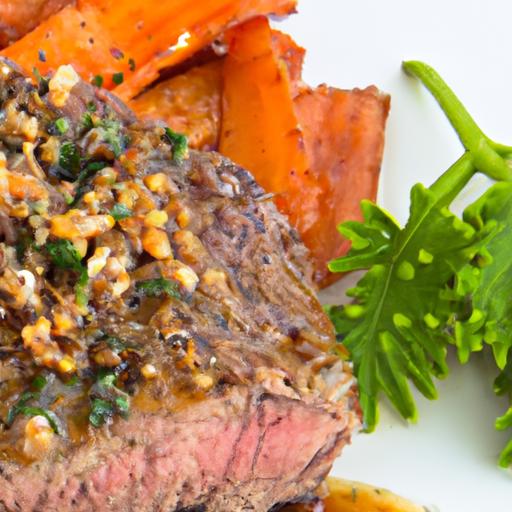Imagine slicing into a perfectly cooked steak, juices gleaming on the surface-only to watch those precious flavors slip away onto the cutting board. Resting steak, the often overlooked final step in cooking, is where magic truly happens. But what if you skip this crucial pause? In this article, we’ll unravel the science behind resting meat, explore the consequences of cutting into your steak too soon, and reveal why a little patience can transform your dinner from good to unforgettable. Get ready to take your steak game to the next level-no knife required.
Resting Steak: What Happens When You Skip the Wait? – The Science Behind Resting Steak and Its Juiciness
Resting steak is a pivotal step that transforms a simple cut of beef into a juicy, flavorful masterpiece. Understanding what happens when you cut into your steak too soon reveals why patience pays off in the kitchen. The secret lies in the meat’s fibers and juices-without a proper rest, those precious flavors abruptly escape, leaving you with a drier experience. As a culinary content creator and food stylist, I’ve witnessed firsthand how mastering the art of resting steak elevates every bite into a tender, mouthwatering delight.
Prep and Cook Time
- Prep Time: 10 minutes
- Cook Time: 8-12 minutes (depending on steak thickness and doneness)
- Resting Time: 5-10 minutes
Yield
Serves 2-3 people
Difficulty Level
Medium
Ingredients
- 2 (8 oz) ribeye steaks, 1-inch thick, at room temperature
- 1 tbsp kosher salt
- 1 tsp freshly ground black pepper
- 1 tbsp olive oil or high smoke point oil
- 2 sprigs fresh rosemary (optional)
- 2 cloves garlic, peeled and smashed (optional)
- 1 tbsp unsalted butter (optional, for finishing)
Instructions
- Season the steaks evenly on both sides with kosher salt and freshly ground black pepper. Let them rest at room temperature for about 20-30 minutes before cooking to ensure even cooking.
- Heat a heavy skillet or cast-iron pan over high heat until very hot. Add olive oil, swirling to coat the bottom.
- Sear the steaks for about 3-4 minutes on each side for medium-rare (internal temperature 130°F), adding rosemary and garlic in the last minute for aroma. Avoid constantly moving the steak to develop a deep, caramelized crust.
- Remove the steaks from the pan and transfer onto a warm plate. Tent loosely with aluminum foil to retain heat but allow airflow, preventing sogginess.
- Rest the steaks for 5-10 minutes-this crucial phase allows muscle fibers to relax, reabsorbing the redistributed juices.
- Optionally, melt butter in the hot pan and spoon the infused butter over the steaks before serving for extra richness.
- Slice against the grain just before serving to maximize tenderness and juiciness.
Tips for Perfectly Timing Your Rest for Maximum Flavor
Cutting into a steak “Resting Steak: What Happens When You Skip the Wait?” too early results in a flood of juices escaping the meat fibers, causing a dry interior and less flavorful bites. A general rule of thumb is to rest your steak for about half the cooking time. For example, if you grill or sear your steak for 10 minutes, aim to rest it for 5 minutes. This unlocks deeper, balanced flavors and a luxuriously juicy texture.
Alternatives to Resting When You’re Short on Time
If you’re pressed for time, a quick tip is to use a warming drawer or preheated oven set at a low temperature (around 140°F) to keep the steak warm while it rests for 3-5 minutes. Another trick is slicing the steak thickly and serving immediately; thick cuts retain moisture better thanks to reduced surface area exposure. Lastly, consider “carryover cooking” – rest your steak briefly and remember it continues cooking slightly off the heat, so pull it from the pan just before the target temperature.
Chef’s Notes
- For extra flavor, marinate steaks ahead or brush with compound butter during resting.
- Resting is equally important for all cooking methods: grilling, pan-searing, broiling, or sous vide.
- Use a meat thermometer to avoid over or under-resting your steak.
- Substitute kosher salt with sea salt for nuanced seasoning.
- For thinner steaks (under 1-inch), resting time can be shorter, around 3-5 minutes.
Serving Suggestions
Serve your perfectly rested steak atop a bed of creamy mashed potatoes, grilled asparagus, or a fresh arugula salad dressed with lemon vinaigrette. Garnish with fresh rosemary sprigs and a pat of melted herb butter for visual appeal and luxurious flavor. Pair with a robust red wine like Cabernet Sauvignon or Malbec to complement the rich juiciness unlocked by resting.

| Nutrient | Per Serving (1 steak) |
|---|---|
| Calories | 600 |
| Protein | 48g |
| Carbohydrates | 0g |
| Fat | 45g |
For more detailed insights on meat cooking science and how to elevate your steak game, check out our Guide to Grilling Steak Perfectly. For further reading on food science related to meat, visit Science Magazine.
Q&A
Q: What does it mean to rest a steak?
A: Resting a steak means letting it sit quietly for a few minutes after cooking and before cutting into it. This pause allows the meat’s internal juices, which have been pushed to the center by the heat, to redistribute evenly throughout the steak, resulting in a juicier bite.
Q: Why is resting a steak important?
A: Think of resting as giving your steak a moment to catch its breath after a hot workout. If you cut into it immediately, all those flavorful juices spill out onto your cutting board instead of staying locked inside the meat. Resting helps keep the steak moist, tender, and bursting with flavor.
Q: What happens if I skip resting and cut the steak right away?
A: Skipping the wait is like tearing into a soda can right after shaking it-juices gush everywhere. When you cut too soon, the steak releases its precious moisture, leaving behind a drier, tougher piece of meat. Your delicious, juicy expectations might turn into a disappointing, parched mouthful.
Q: How long should I rest my steak for the best results?
A: A general rule of thumb is to rest your steak for about half the time it took to cook-usually 5 to 10 minutes. Thicker cuts benefit from longer rests, giving the heat more time to even out, much like letting a fine wine breathe before sipping.
Q: Does the steak keep cooking while resting?
A: Yes, it does! The residual heat continues to cook the steak gently, which can raise the internal temperature a few degrees. This “carryover cooking” helps achieve the perfect doneness without overcooking the meat.
Q: Can I tent the steak with foil while resting?
A: Absolutely! Loosely covering your steak with foil traps warmth without steaming the crust, keeping it hot and ready to impress. But be careful not to wrap it too tightly-otherwise, you risk losing that crispy, mouthwatering sear.
Q: Is resting necessary for all types of steak?
A: While resting is a helpful step for most steaks, very thin or fast-cooked cuts might not need a long rest because they cool down quickly. However, thicker and premium cuts almost always benefit from a little downtime to maximize juiciness and flavor.
Q: Can resting improve other meats besides steak?
A: Definitely! Resting is a universal technique that improves pork chops, roasted chicken, lamb, and even burgers. It’s the secret handshake for unlocking succulent, tender results in any cooked meat.
Q: In short, what’s the takeaway about resting steak?
A: Resting steak isn’t just a culinary cliché-it’s a juicy science. Giving your meat time to relax after the heat gives you a steak that’s tender, flavorful, and satisfying to the very last bite. Skip the wait, and you jeopardize all that juicy goodness. Patience, in this case, really is a delicious virtue!
To Conclude
In the eager dance between knife and plate, resting your steak might seem like a small pause-but it’s a move that turns good into unforgettable. Skipping this crucial wait is like rushing a story’s final chapter; you miss the juicy climax where flavors settle, juices redistribute, and textures harmonize. So next time you fire up your grill or pan, remember: giving your steak a moment to breathe isn’t just waiting-it’s allowing the magic to happen. Your taste buds will thank you for the patience.


